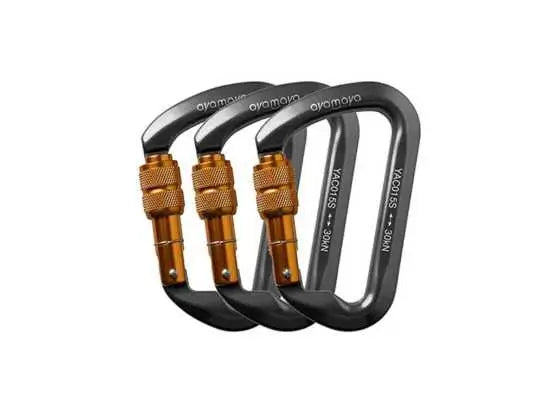Is a 500 lumens light bright enough? Hold on and keep reading for insights concerning the 500 lumens light.
While there are many headlamps and other lighting gadgets that specify the lumens, it may not always be easier to get the best that gives you options, and a better experience. The Ayamaya headlamp is one of such 500 lumens headlamp equipped with 3 superior LEDs to provide the user with an XPG weak and strong light mode. There are also other light options such as the red light and the red flashing mode.
Of course, it’s one of the features among the many features that come in handy when considering a 500-lumen headlamp. The article will deliberate on whether the 500 lumens light is bright enough.
Understanding what 500 lumens mean
What do these 500 lumens mean in the headlamps? Well, a 500 lumens headlamp means that the light has an intensity of 500 lumens of light. Note that you will find several light types out there such as CFL(Incandescent), the LEDs and others, but what you will be paying more attention to is the number of Lumens that the light will produce.
Normally when measuring the brightness of the bulb, we use Lumens as a unit measurement. Note that one Lumen equals the brightness of one candle, which implies that lighting a 500-lumen Bulb will be the same as lighting 500 candles at once. For LED, CFL, or incandescent lighting, 500 lm is a good level of light. It is appropriate for pendant lighting, recessed lighting, down lighting, and up lighting

What 500 lumens lights mean in Torches, flashlights and GU10 LED Bulbs
The most common light sources that you will find include Flashlights, torches and GU10 LED Bulbs. Let’s consider each of them with a special focus on 500 lumens light on each of them, and what it is capable of doing.
Torch
A 500 lumens torch, which is British slang for flashlight, has 500 candles' worth of light output. This is impressive because it simply means that you have 500 candles at once when you have a torch. This level is viewed as a low to medium-intensity torch appropriate for closer-range indoor and outdoor operations and is often available in penlight design. Normally, a torch is relevant when we are focusing on specific directions, rather than being a light source for the whole area.
LED GU10 Bulb
A 500-lumen LED bulb has a brightness level that is higher than that of GU10 LED lamps with standard output. It offers a strong light and may be utilized for the majority of general lighting requirements throughout the house.
Flashlight

A 500-lumen flashlight has enough brightness for close-up work both indoors and outside, is appropriate for outdoor activities like walking, fishing, and hunting, and may be kept in your car in case of emergency. As with all lighting, a flashlight's beam will have less intensity and appear less bright as it gets wider. The light will be more concentrated with a smaller beam.
Are 500 lumens then bright enough?
Yes, 500 lumens will light a room when the light source is a Bulb, but of course, you expect sufficient illumination when you are using a flashlight or a torch in the areas you are focusing on because the light is unidirectional. For example, imagine a room that is one meter by one meter to compare the amount of light you get from various brightness levels. If there is a 500-lumen incandescent lamp in the room, that space can be illuminated to about 50 lux (depending on the reflectivity of surfaces in the room).
When using LED light, the output is different because its directional. Comparatively speaking to other lighting sources, LED light is directed and produces light quite effectively. When compared to other technologies that can produce the same amount of illumination, this amount of light is spread with the least amount of waste and produces a greater intensity on a surface.
When opposed to the warmer yellowish tones of warm white, LED light with cool white color temperatures of 4000K to 6500K will feel brighter with the same quantity of light.
What are the general lighting requirements?
Generally speaking, each site on a property has specific lighting requirements. The required number of lumens for your outdoor lighting can therefore range from 50 to 2400 depending on the level of brightness you need.
50 to 100 lumens are more than enough for minimal background illumination, such as that near your garden and walking trails. However, you might require closer to 500 for entertainment areas like patios and decks. At 1300 lumens, garage and security lighting score even higher, providing enough coverage of the property. These figures aren't accurate, though, and depending on how your property is set up, you might need more or fewer lumens.
So should I rely on 500 lumens light to light a room?
Before thinking about the sufficiency of a 500 lumens light, give the purpose of your external lights some thought before deciding how many lumens you need for them. Asking yourself where you'll put them and how much light is required now will help you avoid having to change out bulbs later on. Additionally, this will stop mishaps in locations with insufficient or excessive lighting. Additionally, testing out different bulbs ahead might help you identify which ones have the lumens you need.
Ayamaya has the products you need if you're looking for the ideal outside landscape lights for any home. With a few touches on your smartphone, lighting systems can adapt to any brightness setting and provide several customization possibilities, especially the Ayamaya headlamp.
Anything up to about 500 lumens won't feel bright enough as a good overall amount of light in an average-sized room in your house. It will be required to take into account more than one bulb or lamp, up to 1000 to 2000 lumens for a living room, if you want a brighter light. Anything up to 500 lumens would be suitable for ambient lighting if there is no primary source of light.









